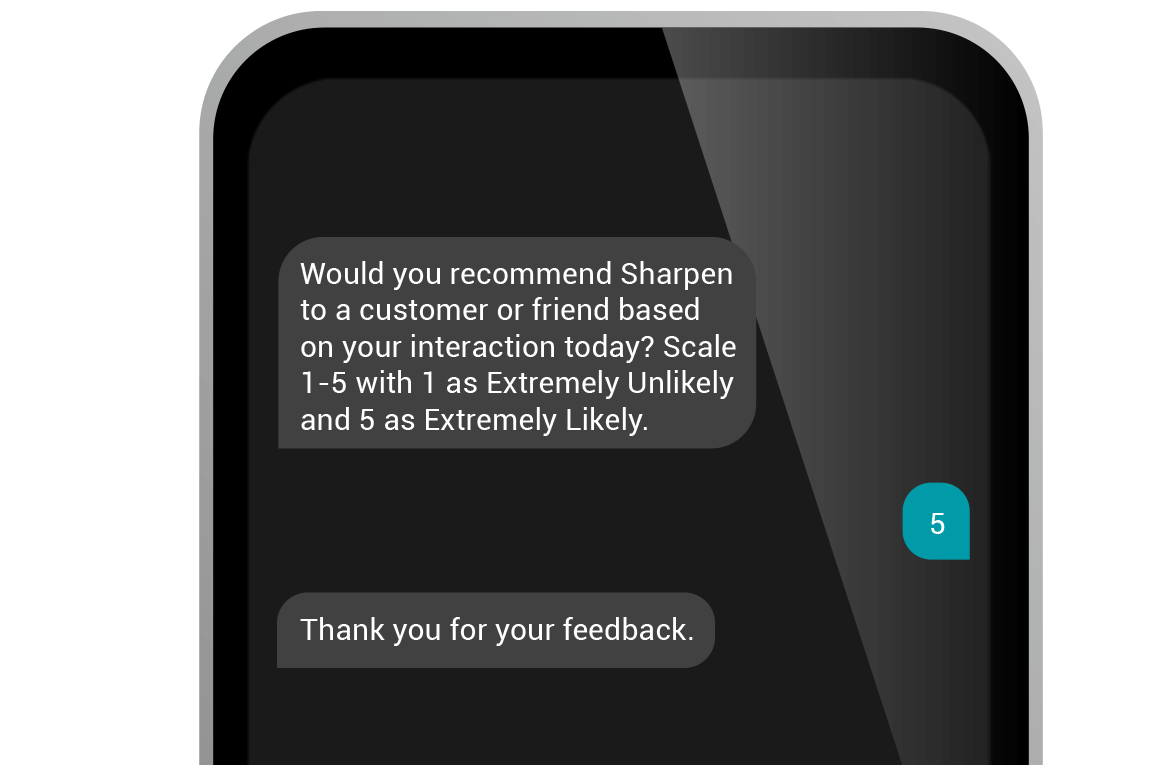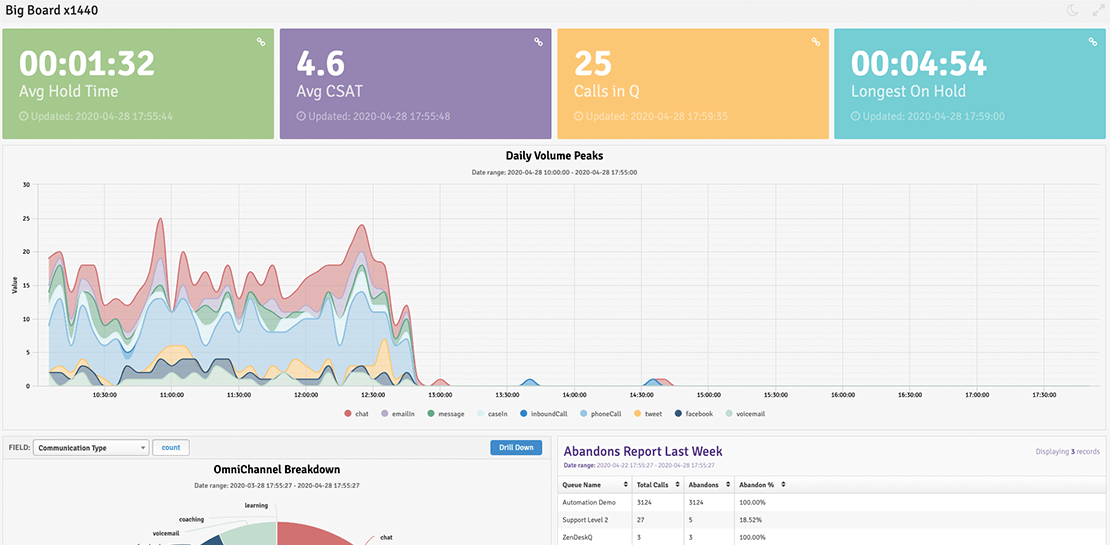
The 90-Day Plan You Can Implement Today to Boost CSAT Scores
There’s no fail-proof template for customer satisfaction. Creating happy customers comes with tons of careful intention, a thoughtful strategy and consistent actions from you and your team of agents. A copy-and-paste button to transfer one positive service experience to the rest of your customers just doesn’t exist.
But, given a combination of the right methods and metrics, you can change the way your agents serve your customers. When you do, you make positive experiences repeatable for your customers. And when your customers come to expect unique, delightful experiences on the regular, their feelings about each service interaction (and your company) shift for the better.
Download Now: Bring these 7 projects to your VP of Ops and address them together to improve customer satisfaction.
You don’t need a perfectly-crafted template to land higher CSAT scores. You need actionable strategies you can swiftly implement and sustain. We’ve culled through dozens of methods and piled together our favorites.
Read on and implement these tactics over the next 90 days for higher CSAT scores and customers that keep coming back.
Days 1-30:
Refine your CSAT survey.
Ask your customers two, related questions on their CSAT survey. The simpler and more direct your questions, the better. For starters, ask a question they can answer using a sliding scale. Like, “How would you rate your most recent service experience on a scale from 1-5?”
Follow that one up with an optional, open-ended question where customers have the chance to expand on the first question. Like, “tell us why,” or “what was memorable about your experience?” Offering up an open-ended question to follow lets customers get specific with their responses. It gives an easy outlet for feedback and shows you’re interested in the details of their experience.
Collect all the feedback you can.
Create triggers to send surveys to customers 15 minutes after their most recent service interaction. The quicker you can deliver the survey, the more likely you are to get responses.
What’s more, use your customer data to determine how to send each survey. Does the customer always reach out via live chat? Have the survey pop up in their chat window following the interaction. Or, does the customer have a history of only phone calls? Prompt them to answer a few questions by phone after they hang up with your agent. Customize your distribution method to match your customers’ journey.

Get your one-month benchmark score, plus benchmarks for other key metrics.
After you’ve diligently sent surveys to customers post-interactions, compile data to get your benchmark scores. Create a customer satisfaction dashboard, and loop in other metrics that have a major impact on CSAT, too. Look at things like abandonment rates, first call resolution and average speed of answer. See where you stand with each of these metrics now, so you can compare numbers on day 90.
Need help deciding what metrics to measure? Look at these 7 KPIs through the lens of your agent to see how you can keep improving your contact center.
Ramp up agent training.
Next up, take specifics from your one-month benchmark score, coupled with comments and open-ended feedback, to see where your agents need to improve. Address open-ended feedback, first. That’s where you’ll get the most detailed and actionable feedback about your customers’ experience. But, don’t stop there.
Look to your other quantifiable metrics for deeper insights. If you’re looking at your newly-minted CSAT dashboard and see call abandonment and FCR dipping below the norm, coach your agents in these areas, too. Use your initial data and CSAT responses to deliver targeted training to your agents, so you can fix the issues customers pointed out.
Days 31-60:
Identify your unhappy and at-risk customers.
Once your training initiatives are underway and your agents are rockin’ and rollin’ on their way to better service, dig into the specifics of your survey feedback. See how many surveys customers filled out over the course of the 30 days. Take note of your one and two-star scores, paying close attention to the open-ended feedback paired with those scores.
Identify the group of customers flagging interactions with marks of poor service. These customers are likely either at-risk or right at their tipping point. Sift through their interaction history and notes to see what pains they’ve experienced throughout their journey. And, as trends pop up in your survey responses, see what other customers may have experienced the same pains, but slipped under the radar without giving feedback. Then, gather all you can about these specific customers so you can direct your attention to fixing obvious pain points.
Want more ways to keep your at-risk customers from heading for the door? Use the 7 methods to reduce customer churn.
Use your detailed feedback to predict future customer patterns, and better plan and train your agents for those.
Equipped with all that data and interaction history, strategize around how to fix the key problems you uncovered. Predict when customers will reach out for help again, and improve their future experiences. Continue your agent coaching efforts, serving up more relevant lessons based on customer comments. If all your one-star reviews were written by customers who waited on hold for 30 minutes, then coach agents to jump on the phones quicker. And, look at your processes and WFM to see if there’s a foundational gap setting agents and customers up for failure.
See how you can help your team work more efficiently. Speed up your average speed of answer by rerouting overflow calls to different sets of agents, and make sure your skills-based routing is working for you, not against you.
Build a high-performing team with coaching, training, and reporting that support better workforce engagement. Here’s how.
Expedite support interactions for your previously frustrated customers.
While your agents are focused on improving KPIs, be proactive with your group of frustrated customers. Reach out personally to those who’ve left unsatisfied reviews and didn’t get the help they needed. Assure them you don’t take their feedback lightly and their happiness is your top concern. After, mark these customers as high-priority cases. Then, the next time those customers reach out for help and pop up in your agents’ queues, they’ll get gracious service instantly.
Close all outstanding cases.
FCR is a metric directly linked to more satisfied customers. When this metric slips, so does your CSAT score. In an effort to get higher CSAT and happier customers, dig into your outstanding cases. Look at why these specific cases stayed open after the first interaction. Then, be sure agents followed up with customers and took the right steps to remedy any larger issues internally. See which cases can be closed on the spot, and make it happen. For the cases that require a bit more effort, tag in a team of agents to help address any outstanding concerns.
Days 61-90:
Check in with customers who’ve answered your surveys.
As you embark on your final 30-day stretch, be more proactive with your service. Send follow up communications to customers who’ve taken CSAT surveys. Let them know you’ve collected their feedback and made changes to address common pain points for your customers. Give them a direct phone line and email address to send in any additional feedback they’d like to share.
Be open and honest with your communication about CSAT surveys. Let customers know that you’re evaluating these surveys and using them to make important, service-level changes. When your customers know what they say actually drives change, they’ll be more inclined to give you a thumbs up or down in the future.
Collect new survey results.
You’ve been hard at work digging into your customers’ journey and finding ways to make it better. All while your agents soak in new training and more lessons to improve their KPIs. Now’s the time to see the payoff of your efforts.
Give your survey another look to make sure the questions are still relevant to your customers, even after the changes you’ve made. Adjust questions if you need to and create new triggers to collect improved data.
If your survey doesn’t need adjustments, compile results from your triggered surveys over the past 30 days. Don’t include your benchmarked surveys in this data collection. Only use survey data collected in the 61 to 90-day time frame. That way you can see how you’ve improved over time.
Hear what your customers really want and collect feedback that grows your business.
Analyze results.
Now, compare your data with your original benchmark score. See if your ranking has improved, and compare your open-ended feedback, too. Were your customers more descriptive and willing to share information after your outreach efforts?
Create your freshened-up customer satisfaction dashboard and view it side-by-side with the original.

Are your individual metrics trending up? Did your focus on improving FCR and ASA make a difference with your agents? Make note of any and every change you see, so you can repeat successful outcomes or improve your approach where efforts didn’t bring the payoff you hoped for.
The end goal: improve your customers’ overall experience.
As you measure CSAT and close out your 90-day action plan, look for ways to scale and replicate the process with your entire customer base. When you dig into interactions and surveys to find pain points, eliminate these pains in your customer journey rather than solving for one-off problems.
Use your data and feedback to replicate and scale positive experiences, and to get rid of the not-so-positives. Putting happy customer experiences on repeat means higher CSAT scores that create enduring customer relationships, not just quick boosts to your metrics.
Go one step further to improve CSAT and take on one project at a time to improve your contact center operations. Bring these 7 project ideas to your VP of Ops and pick one to start together – today.
We originally published this post on January 29, 2019, and we updated it with fresh insight on June 18, 2020.

